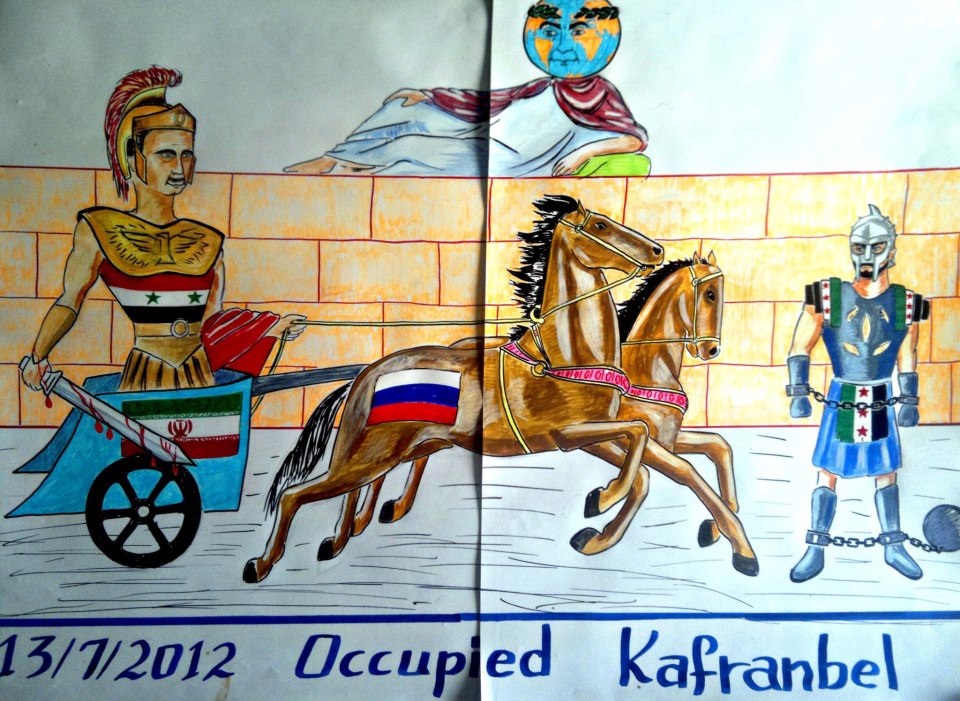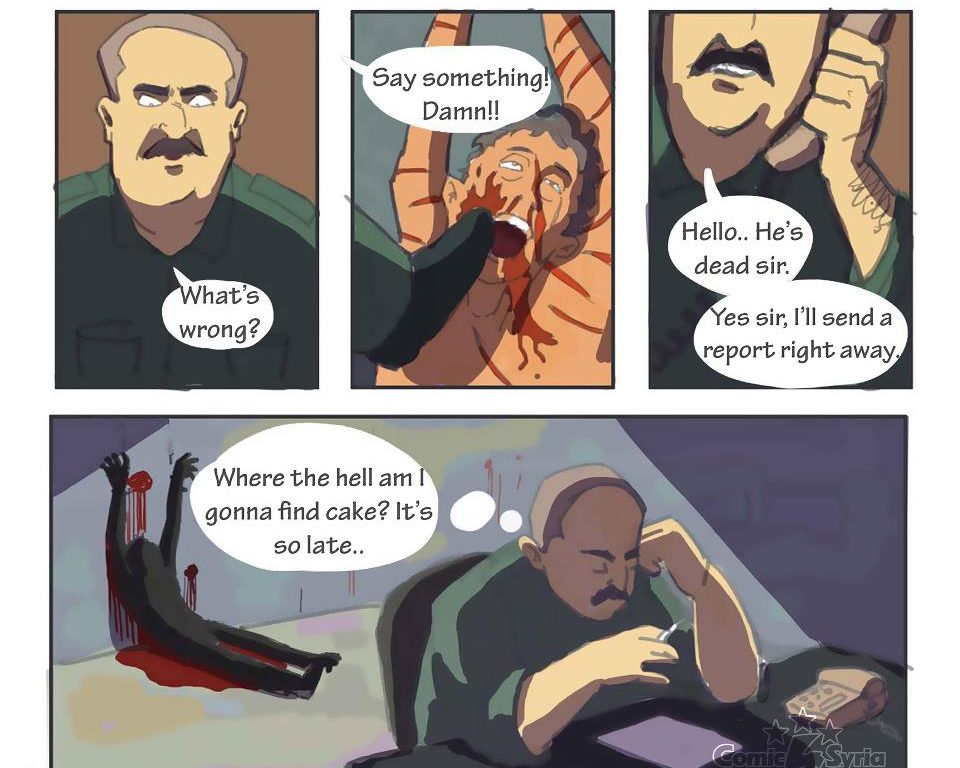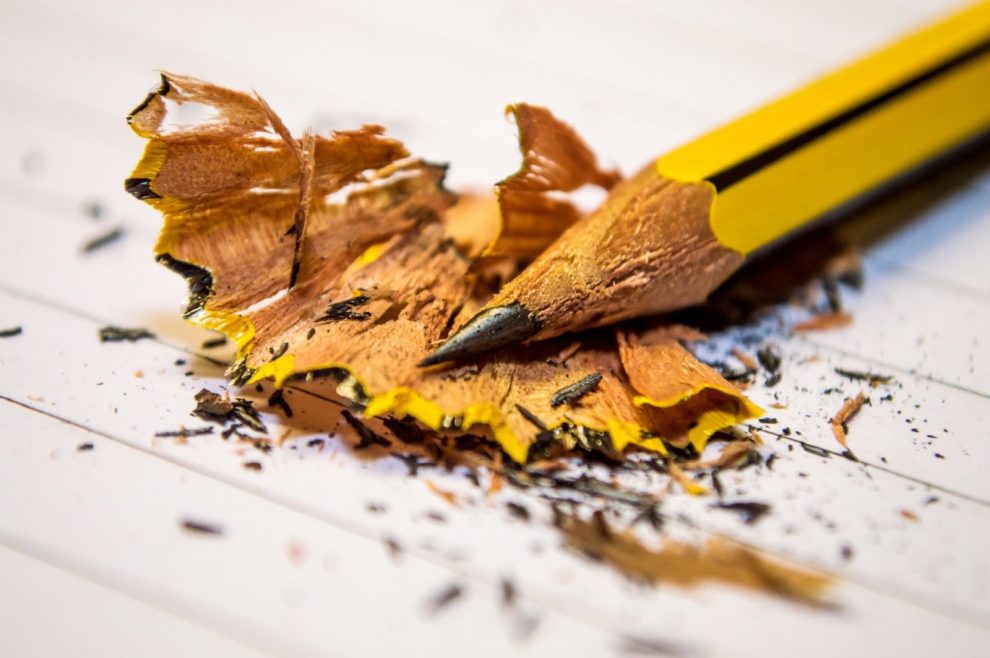With the start of the uprising in Syria, new platforms and audiences provided a new world of freedom of expression and art that had for decades been choked under the iron fist of Baathist censorship.
While traditional arts like theatre, music, and painting were oppressed, more modern arts, like comics and animation were denied birth to begin with. Caricatures were also oppressed, albeit their modest beginnings before the Baath party overtook rule in Syria in the 1960s.
Following the start of the uprising in 2011, a media blackout was enforced by the government. Due to the hysterical monitoring of anything that could be used to video record, including mobile phones, activists began to use drawing as an alternative method of visual storytelling.
Here, we attempt to provide a brief introduction to the most prominent artists and art works of these alternative genres that since 2011 have gained popularity amongst Syrians.
Caricature
Ali Ferzat
Ferzat is probably the most famous Syrian caricaturist alive today. He had decades of work behind him when he was granted the rare publishing permit for the first caricature newspaper in Syria after Bashar al-Asad succeeded his father in 2001. Al Doumari (The Lamplighter) was met with much enthusiasm in Syria, and quickly became a favorite for Syrian readers.
This honeymoon did not last long of course, and the newspaper was heavily censored, before being shut down. Ferzat openly supported the uprising against Asad and paid a dear price for it in August 2011, when his car was cornered on the streets of the Syrian capital, and several thugs attacked him breaking both his hands.
Muwaffaq Qat
The award winning animator became famous amongst Syrians for his caricature works criticizing Asad after 2011. Qat has a long history of working in comics and animation in Syria before the uprising; he was a regular contributor to Ferzat’s Al Doumari. He currently lives in Canada and publishes his caricatures regularly in prominent pan-Arab periodicals.
Murhaf Yousef
A rarity in today’s polarized Syria, Yousef makes a point of avoiding politicizing his work, mainly by ridiculing politics itself. He had started in 2001 and had received several local awards for his work. But it was his recent ‘Visual Terminology’ collection that won him a sweeping popularity amongst Syrians on Facebook. The collection is a witty play on words which invents ridiculous interpretations for political, military and ideological terms that recently have become so prevalent.
Juan Zero
Juan’s work was little known before the uprising. In 2012, he started publishing his works in overt engagement with ongoing events, directly criticizing the regime. This led to his arrest and subsequently self-exile.
His simplistic style gained popularity with his Facebook page reaching over 45,000 followers. Zero often uses his caricatures as comments on current events, and is known to be very fast in drawing up such reactions mixing photographic elements with hand sketches.
Kafranbel Banners
The small hamlet in Idlib, known as Kafranbel, gained monumental fame in Syria, thanks to its famous banners. In the early phase of the uprising, Syrians grew used to awaiting them in the weekly Friday protests.
The main mastermind behind the banners, Raed al-Fares, has since been subjected to severe threats and attempts on his life, despite living in an area outside regime control, because local Islamic militias grew resentful of his criticism.
Although the banners mostly consist of written phrases only, in Arabic and also English, they frequently turn into single frame comics or caricatures, depicting political scenes in stark satire.

The art of comics in Syria was mainly based on translated foreign productions, apart from a few pan-Arab children’s magazines. Passion for Manga was not uncommon amongst young artists, but it remained more of a hobby because of the limited market available.
The revolution provided ample audience and space for the emergence of a comic scene in Syria, even though it quickly institutionalized itself mainly in children’s magazines again.
In the last year, even these magazines have been undergoing serious pressures, often depending on volunteer artists for financial reasons and facing censorship inside Syria, which has resulted in some limiting themselves to online distribution, and others coming to a halt all together. All of these magazines are distributed for free in print, mainly in areas outside of regime control and in neighboring refugee camps.
Comics 4 Syria
Comics4Syria is one of the first collective comic initiatives. Started in 2012 as a Facebook page, it published single-frame and comics focusing exclusively on politics and current events in Syria.
It gained momentum very quickly but could not sustain itself for much longer than a year since all its artists worked on a voluntary basis. However, many of those who had set up this collective regrouped to establish Teen Baal magazine.

Teen Baal is a monthly magazine for children and adolescents. It was established in mid-2014 and focuses on Syrian history, exploring the country’s different regions and traditions. It also features stories from different parts of the world and a series of space adventures, where protagonists “struggle for galactic freedom and justice on all planets.”
Teen Baal also presents safety instructions and emergency response basics for Syrian children living in war zones, in addition to a segment on creative recycling. It is currently the only children’s magazine that is still being printed and distributed in Syria, although team members say that the funding is enough to cover only a few more months.
Tayyarat Waraq (Kite)
Tayyarat Waraq is a fortnightly periodical for children, focusing on children’s rights as part of human rights, and the importance of educating them to know their rights. It was established in 2013 with support from Hurras (Guardians), a Syrian activist network. Tayyarat Waraq's simple drawing style carries much informative content on basic science, geography and psychosocial skills.
Zaitoun o Zaitounah (Olives&Olive)
Established in Saraqib, Idlib, with the idea of providing an alternative for the schooling that many children were denied amidst war and displacement, Zaitoun o Zaitounah started off as a weekly. Since then, however, it has had to slow down to a fortnightly for production and distribution reasons.
Its chapters are organized similarly to traditional school curriculum subjects, such as literature, science, math, history, geography, calligraphy and English. It also hosts a section for publishing the contributions they receive from the children.
Qaws Quzah (Rainbow)
Qaws Quzah was founded in 2014 in Daraa, the city that sparked the uprising when a group of school boys were arrested and brutally tortured by regime security for spraying anti-regime graffiti on their school walls. Despite the clear political positioning of those working for the monthly magazine, Qaws Quzah has made a point of producing neutral content with no hints to any political positioning. The last published edition (the 30th) was distributed in August 2016.
Animation
Sulaima (by Jalal Maghout)
The animated documentary short ‘Sulaima’ is a part of a feminist project called Estayqazat (Awakened). It tells the story of a middle aged activist whose marriage and relationship with her children collapse because of her activism.
In 15 minutes, the film briefs many of the underlying reasons that led to the uprising in 2011, and highlights the intersections between the struggle for women's rights and Syrians in general. The film was premiered in Doc Leipzig in 2014, and has since been screened in various other festivals.
Mawqef Micro (by Ammar Daba and Ahmad Darwish)
Mawqef Micro is a YouTube mini-series of short sketches of conversations between two friends, Biro the bus stop street vendor and his student friend Shadi. The project was initiated in 2010 with an artistic style that is simple but precisely depicts small details of everyday life and interaction.
Although it did not shy away from criticizing the regime in its post-2011 episodes, it also distanced itself from other political actors in the opposition and beyond, and goes past them all to promote a critical approach to society and institutions as a whole.
Goal to Syria (by Amjad Wardeh)
Wardeh started his work briefly before the start of the uprising, but gained fame amongst Syrians for his animations and illustrations criticizing the regime after 2011.
‘Goal to Syria’, his most popular short, tells the story of a future soccer super star, and his relationships with the Syrian Civil Defense workers who rescue civilians from under the rubble in opposition-held territories.
Abu Iskandar (by Wael Toubaji)
The three minute animation short produced by the Kayani collective tells the story of the city of Dayr az-Zawr through its toughest tomcat, Abu Iskandar. Toubaji’s drawing style is dark and rough, and the short is rapid and concise, but heavy in its symbolism of a city that is left to face its destruction fate with little attention.
[Main image: 'Merry Chemicals' by Comics 4 Syria - posted on Comics 4 Syria Facebook page on December 26, 2012 (Fair use. All rights reserved to the author)].




